Everyone’s life is more or less connected to the technological progress achieved through scientific activity, but it takes time to realize the power of science in real life, says Luan Enjie, chief commander of China’s Chang’e-1 mission.
The Apollo missions exemplified the impact of lunar exploration on the development process of American society. Its effects made themselves felt in a range of fields including information technology, telecommunications and public health.
Analysis suggested that the rate of return on the Apollo missions was at least one to six; in other words, every dollar spent on the program would produce a return of six dollars to society, said Yang Yuguang, a researcher from China Aerospace Science & Industry Corp.
The knowledge and skills used for the 3,000 welds on each of the rocket engines that propelled Chang’e-3 into space have already been applied to machinery used for the production of some sugar substitutes, according to Sun Huixian, deputy engineer-in-chief of second phase of China’s lunar program.
High-tech sunglasses, the memory foam pillow, and high-resolution cameras in mobile phones are all examples of the application of space technology in the real world.
But in practice, Chang’e technology has very limited applications at the moment. It will take time for the program to deliver benefits that can be applied on the ground.
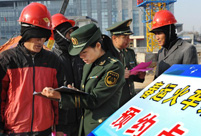 People prepare for upcoming 'Chunyun'
People prepare for upcoming 'Chunyun'  Highlights of Beijing int'l luxury show
Highlights of Beijing int'l luxury show Record of Chinese expressions in 2013
Record of Chinese expressions in 2013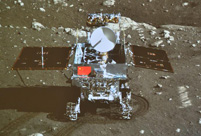 China's moon rover, lander photograph each other
China's moon rover, lander photograph each other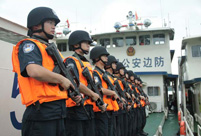 17th joint patrol of Mekong River to start
17th joint patrol of Mekong River to start Spring City Kunming witnesses snowfall
Spring City Kunming witnesses snowfall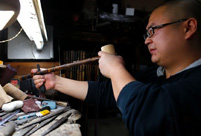 Heritage of Jinghu, arts of strings
Heritage of Jinghu, arts of strings Weekly Sports Photos
Weekly Sports Photos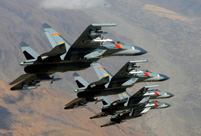 PLA elite units unveiled
PLA elite units unveiled  PLA elite units unveiled
PLA elite units unveiled  Chinese scientific expedition team
Chinese scientific expedition team  Heritage of Jinghu, arts of strings
Heritage of Jinghu, arts of strings The unchanged flavor of changing Beijing
The unchanged flavor of changing Beijing Miss Philippines crowned Miss International
Miss Philippines crowned Miss International Bolt throws down bus challenge in China
Bolt throws down bus challenge in ChinaDay|Week|Month